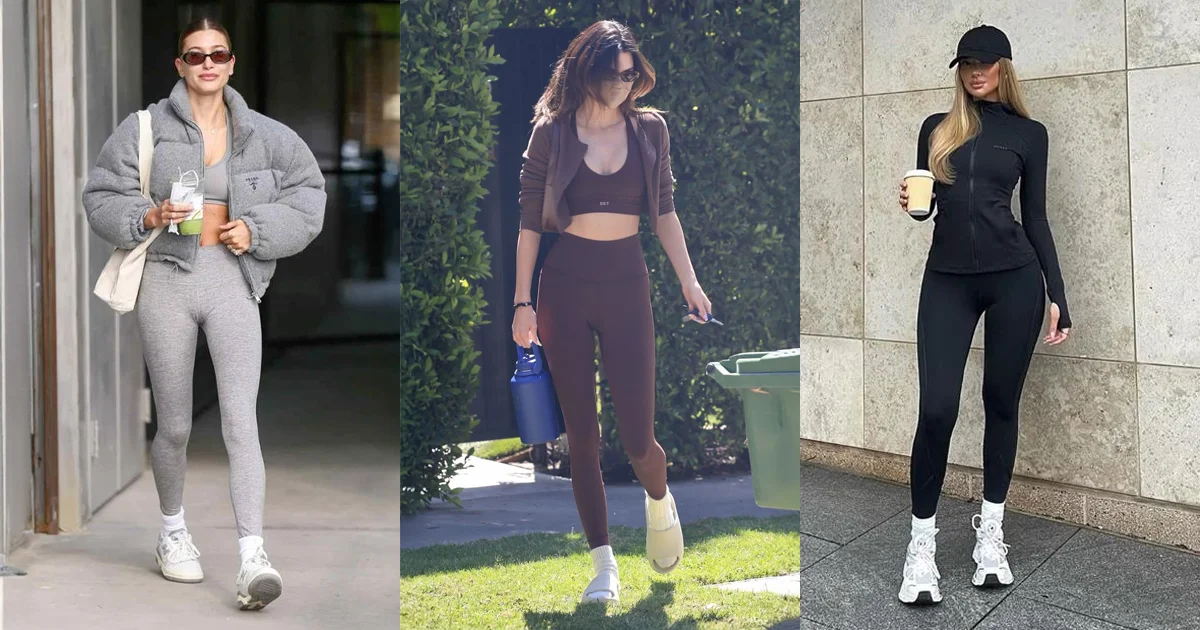Channel your inner Vogue and Confidence!

The sportswear industry is evolving rapidly, driven by technological innovations, shifting consumer preferences and a growing focus on sustainability. As sportswear manufacturers explore new ways to create high performance, stylish and eco friendly apparel, several key trends are shaping the industry’s future. From cutting-edge materials to mass customization, the evolution of sportswear manufacturing is redefining how athletic apparel is designed, produced, and consumed.
Modern consumers expect more than functionality from their sportswear. They demand apparel that reflects their lifestyles, values and personal aesthetics. As a result, custom clothing manufacturers are integrating innovative fabrics, AI driven design and sustainable innovations to enhance performance and appeal.
The global sportswear market is expected to grow to $220.34 billion in 2025, with a compound annual growth rate (CAGR) of 7.84%. This growth is driven by several factors. This includes the popularity of sports, health consciousness and rising disposable incomes.
The need for premium sportswear that improves performance is growing as more people participate in health and fitness-related activities. This growing sector offers the business a plethora of chances for innovation and long-term growth.
Historically, American sports clothing manufacturers have played a foundational role in shaping the global sportswear industry. The early dominance of American brands in the global market was driven by a strong focus on innovation, performance and design. This enables them to influence trends and technological advancements in sportswear production.
Today, American sportswear manufacturers continue to lead the way in research and development. They integrate cutting-edge technologies such as moisture-wicking fabrics, seamless construction and AI-driven design techniques. Many have also embraced sustainable manufacturing practices. They utilized eco-friendly materials, reducing water consumption and incorporating circular economy principles into their business models.
American sportswear manufacturers continue to lead the industry and influence its future both locally and internationally. This is due to their robust infrastructure, state of the art production facilities and track record of adjusting to market trends.
While large corporations dominate the sportswear market, small scale businesses are making a significant impact by pioneering trends that challenge traditional manufacturing methods.
Niche brands are leading the way in ethical production, sustainable sourcing and direct-to-consumer models. These businesses usually provide limited edition or handcrafted goods. These products satisfy specific consumer needs by appealing to athletes and fitness enthusiasts.
Customers looking for high performance clothing have been driving the current spike in demand for premium grade sportswear. Due to this change, new small businesses are now able to compete with the industry’s well-established heavyweights.
With their specialized goods that prioritize high quality materials, ergonomic designs and cutting-edge performance features, these up-and-coming firms frequently target niche markets. Due to consumers’ willingness to spend money on high-end sportswear that blends fashion and utility, small manufacturers are finding it easier to establish themselves in the market. In order to reach their consumers, many of these businesses use internet platforms and direct-to-consumer business models.
Sports producers are implementing eco friendly methods. This includes waterless dyeing, biodegradable textiles and recycled materials to allay these worries. Some businesses are even putting in place take-back schemes. This allows customers return used sportswear for recycling and other uses.
Advances in technology allow brands to create tailored apparel that meets individual preferences in terms of fit, design and functionality.
From personalized color schemes to performance-based alterations, customization is making sportswear more inclusive and appealing. Brands can create made-to-order clothing with less waste thanks to smart manufacturing processes like 3D knitting and laser cutting, which further support sustainability initiatives.
As more companies look to create their own brand identities without the necessity for internal production facilities, private label sportswear manufacturing is becoming more and more popular.
Private label producers provide adaptable solutions that let businesses use the infrastructure and experience of well-established manufacturers to create their own clothing designs. With this strategy, companies may join the sportswear sector offering premium goods at affordable costs.
Technologies such as 3D printing, automation and AI-driven design are reducing waste and optimizing resource usage.
Seamless garment construction eliminates the need for excess stitching and fabric waste, while digital prototyping speeds up product development. Also, robotic sewing machines and smart factories are streamlining production. This allows manufacturers to meet increasing demand while minimize environmental impact.
One of the biggest challenges in sportswear manufacturing is accommodating diverse body types. Standardized sizing models often fail to provide an inclusive fit, leading to discomfort and limited accessibility for certain consumers. But it’s safe to say nobody is to be blamed for this. As a clothing manufacturer, everyone wishes to save a buck and cut corners for slightly higher gains.
Brands are now adopting extended size ranges, adaptive designs and body positive marketing to cater to a wider audience. AI driven body scanning technology is also helping manufacturers create better-fitting apparel that enhances comfort and performance.
Material innovation is at the forefront of sportswear manufacturing with brands continuously seeking new fabrics that enhance performance, comfort and sustainability. Sustainable materials such as recycled polyester, organic cotton and bamboo fibers are becoming more prevalent, reducing the industry’s reliance on virgin resources.
High tech materials with improved features like moisture wicking are growing in popularity.
With rise of athleisure consumers expect sportswear that transitions seamlessly from the gym to everyday wear. As a result, brands are exploring modular designs, ergonomic stitching and versatile silhouettes to meet these evolving expectations. Moreover, adaptability in sportswear design is very important for accommodating a wide range of sports from high intensity training to casual fitness activities.
As manufacturers continue to explore advancements such as AI-driven design, automated production and biodegradable textiles, the sportswear landscape is becoming more dynamic than ever.
The shift to sustainable production is now required rather than optional due to consumer demand and environmental concerns. Businesses that use eco friendly production methods such recycling programs and ethical sourcing, are setting new standards for the industry and leading the charge for a more sustainable future.
The rise of small scale businesses has diversified the marketplace. These new players are bringing fresh perspectives, niche innovations and consumer-first approaches that challenge traditional manufacturing norms. By providing clothing that satisfies certain sports and lifestyle demands, the emphasis on personalization, inclusiveness and performance-driven materials is improving the entire customer experience.
American sportswear producers continue to play a key role in this development. They use their infrastructure, experience and innovative heritage to advance the sector. In the meanwhile, up and-coming companies and independent producers are expanding the realm of what is feasible, fostering competition and igniting fresh market trends. As manufacturers continue to innovate, the industry is moving toward a more responsible and inclusive future.
